Jo Spence(1934-1992)
Following her breast cancer diagnosis and subsequent lumpectomy, Spence documented her treatments and the changes in her body. These images were often raw and immediate. Here is one small panel of the installation The Picture of Health?

Jo Spence, in collaboration with Rosy Martin Maggie Murray, and Terry Dennett, from The Picture of Health?, 1982. MACBA Collection. MACBA Foundation. Work purchased thanks to Banco Sabadell Foundation. © Jo Spence Memorial Archive, The Image Centre.
Four photos are mounted with white corner tabs on a horizontal strip of black paper. The two images on the left, placed close together side by side, show similar scenes of a hospital ward, possibly taken a few moments apart, from a low angle looking across the room. In each image, a bed tray appears in the foreground, while the focus falls on several white-coated figures standing over the bed of a patient, who is out of view. To the right of these paired images, a vertical half-portrait of Spence, facing forward, shows an “X” marked above her left breast. Her torso is wrapped in a sheet, pinned in front. The image furthest right shows an empty hospital bed with a sign reading “NIL BY MOUTH” hanging from the headboard’s metal rails.For this traveling exhibit, Spence mounted her snapshots with corner tabs, visible here, as in a scrapbook (a form she explored extensively in earlier work). It is worth noting that most of her hospital photos were probably illegal, since permission was not given to patients to photograph within medical facilities. Using her camera as what she later called “a third eye, almost as a separate part of me which was ever watchful,” Spence captured experiences that were off-limits to such documentation.
This series of four photos reveals Spence’s refuting and reclaiming the clinical gaze. Shot from her bed looking across an open-plan ward, the two photos on the left focus on half a dozen or more men in white lab coats clustered around another patient’s bed. In the second of these two images, we can see a curtain suspended from rods in the ceiling, and the lab-coated figure on the far right of the frame pushes open those curtains to expose the patient more fully to the group’s view.
Spence brings to our attention the patriarchal power that literally looms over the patient—the position she, as well as the viewer, occupies. In an interview with David Hevey, Spence commented on the open copy of the tabloid The Star. The resulting image “is a form of constructed documentary which I later used to comment on the fact that the ‘star’ of the medical scenario is the consultant and not the patient.”

Jo Spence, in collaboration with Rosy Martin, Maggie Murray, and Terry Dennett, from The Picture of Health?: Property of Jo Spence? MACBA Collection. MACBA Foundation. Work purchased thanks to Banco Sabadell Foundation. © Jo Spence Memorial Archive, The Image Centre.
In a half-length self-portrait, Spence stands before us, naked from the waist up. Her glasses appear prominently below close-cropped hair. Their darkened lenses obscure her eyes from view. Behind her, out of focus, the wall appears to be covered with posted photos or other images. Spence’s arms hang at her sides. Taking up most of the field of the image are Spence’s breasts. Below and around her left breast is a bandage or dressing. Above the dressing, in thick black letters inked onto Spence’s skin appear the words “Property of Jo Spence?”Created in collaboration with her then-partner Terry Dennett, Property of Jo Spence? stages a crisis of bodily integrity, a reenactment of what she later described as the traumas of being “marked up for amputation” during her initial hospitalization. Related images include a thick, black X inked above Spence’s breast (as in the third photo from left in the panel above). But this one employs the language of capitalism—ownership—to show how the medical industry limits agency over one’s own body. “Property” takes on the tradition of clinical photography of human specimens. In a manner of self-protection, Spence’s glasses appear as shades, hiding her intimate gaze from us. There is no reference to healing or recovery. Spence resorts instead to the only wording the culture, the medical industry, understands: Who owns this body? Whose right is it to breach its borders?
Perhaps most radically, this photo was not made to be an art object at all. Spence mentions that she chose this image to take with her to the hospital, among the numerous photos that emerged from tableaux she and Dennett staged before she went in for surgery. “I felt I was entering unknown territory and wanted to create my own magic fetish to take with me,” she later wrote.

Jo Spence, in collaboration with Rosy Martin, Maggie Murray, and Terry Dennett, from The Picture of Health?: How Do I Begin to Take Responsibility . . . MACBA Collection. MACBA Foundation. Work purchased thanks to Banco Sabadell Foundation. © Jo Spence Memorial Archive, The Image Centre.
Against a bright green rectangular background is a collage of color photos. Each shows a part of Spence’s body, with a word written on the skin in large blue capital letters. The body parts include a hand, inner arm, forehead, clavicle, back, and buttocks. Together, moving clockwise from top right, the words read, “HOW DO I BEGIN TO TAKE RESPONSIBILITY FOR MY BODY?” In the center of the collage is a black-and-white photo showing Spence’s naked back from the waist up as she faces an oval mirror. Spence regards her reflection, in which her head is held straight, elbows out, hands clasped at her chest above her breasts.Spence used collage to explore her experience of the body/mind as always in process. One of Spence’s most suggestive works, How Do I Begin to Take Responsibility confronts the Western medical industry’s atomization of the individual, in contrast to the more holistic ways of healing and being that she embraced. Spence annotated this image as follows: “Adding a documentary photograph taken by Maggie Murray into images of my fragmented body which had been written on and staged for the camera in a photo therapy session with Rosy Martin. My aim is to try and form a bridge between work done on health struggles, usually dealt with through documentary photography, and work done on body as image. An understanding of how these spheres relate seems to me essential to being healthy and well- balanced.” Claiming responsibility for one’s own decisions for treatment was key to The Picture of Health? For Spence this meant the holistic, alternative method depicted in her own self-image in the mirror, shown here in the center of the collage of atomized parts of the body. In her essay The Politics of Transformation, Spence wrote, “Out of the broken pieces of the self will come a subjectivity that acknowledges both the fragmentation process and the ‘part work,’ but which encompasses and embraces such parts and allows them to have a dialogue with each other. Out of this, for me, has come new activity, new acceptance, and changes I never considered possible.”
Sources:
Hevey, David. “An Interview with Jo Spence.” The Creatures Time Forgot: Photography and Disability Imagery. Routledge, 1992.
Spence, Jo. Cultural Sniping: The Art of Transgression. Routledge, 1995.
Spence, Jo. Putting Myself in the Picture: A Political, Personal and Photographic Autobiography. The Real Comet Press, 1988.
About This Site
A Picture of Health: Jo Spence, a Politics of Disability and Illness is a multi-pronged project curated by Kenny Fries and Elisabeth Frost.
In 1986 the British artist, educator, and activist Jo Spence (1934-1992) described the question fundamental to her work: “how to represent a body in crisis.” Spence’s work reveals powerful political and artistic responses to the experience of inhabiting such a body and is as timely as ever. This website places her work in the context of the lived experience of chronic illness and of contemporary Disability Arts.
The Artists
 Jo Spence
Jo Spence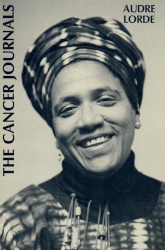 Audre Lorde
Audre Lorde Yvonne Buchheim
Yvonne Buchheim Guadalupe Maravilla
Guadalupe Maravilla Simon Watney
Simon Watney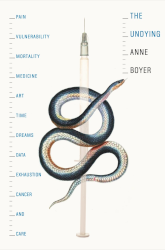 Anne Boyer
Anne Boyer Suleika Jaouad
Suleika Jaouad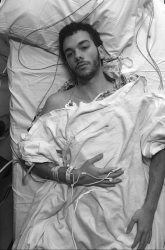 Joey Solomon
Joey Solomon Stephen Starkman
Stephen Starkman Andrea Gibson
Andrea Gibson Mary Cappello
Mary Cappello Alicia Ostriker
Alicia Ostriker Pelenakeke Brown
Pelenakeke Brown Navild Acosta and Fannie Sosa
Navild Acosta and Fannie Sosa Perel
Perel Alice Wong
Alice Wong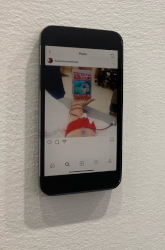 Carolyn Lazard
Carolyn Lazard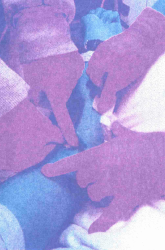 Ezra Benus
Ezra Benus Naomi Ortiz
Naomi Ortiz Cancer Care Collective
Cancer Care Collective